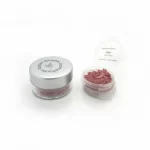Title: Sealed Tunable Boron Nitride Ceramics: A Promising Breakthrough
Introduction:
Sealed tunable boron nitride ceramics have emerged as a groundbreaking material in the field of advanced materials engineering. These ceramics possess unique properties that make them highly versatile and valuable for numerous applications. In this article, we will delve into the characteristics, synthesis methods, and potential applications of sealed tunable boron nitride ceramics.
Properties of Sealed Tunable Boron Nitride Ceramics:
Sealed tunable boron nitride ceramics exhibit exceptional properties that set them apart from other materials. These properties include high thermal conductivity, excellent electrical insulation, high melting point, low friction coefficient, chemical inertness, and superior mechanical strength. Combined, these attributes make sealed tunable boron nitride ceramics an ideal choice for various demanding environments and industries.
Synthesis Methods:
The production of sealed tunable boron nitride ceramics involves several synthesis methods, each with its own advantages and limitations. The most commonly used techniques include hot press sintering, spark plasma sintering, and chemical vapor deposition. Hot press sintering involves applying heat and pressure to compacted boron nitride powders to form dense ceramic structures. Spark plasma sintering employs pulsed DC currents to rapidly consolidate powder particles into fully dense ceramics. Chemical vapor deposition involves the deposition of boron nitride films onto substrates using precursors in a gaseous state.
Applications of Sealed Tunable Boron Nitride Ceramics:
1. Thermal Management: Sealed tunable boron nitride ceramics’ high thermal conductivity makes them an excellent choice for heat sinks in electronic devices. They efficiently dissipate heat, reducing the risk of overheating and increasing device lifespan.
2. Electrical Insulation: Due to their exceptional electrical insulation properties, these ceramics find applications in the electrical industry. They are used as insulating components in high-voltage transformers, capacitors, and power distribution systems.
3. High-Temperature Environments: Sealed tunable boron nitride ceramics’ high melting point and chemical inertness make them suitable for applications in extreme temperatures. They can be used as crucibles, nozzles, and furnace linings in the metallurgical industry.
4. Aerospace Industry: The exceptional mechanical strength and low friction coefficient of sealed tunable boron nitride ceramics make them ideal for aerospace applications. They are employed in manufacturing turbine blades, engine components, and rocket nozzles.
5. Biomedical Applications: The biocompatible nature of sealed tunable boron nitride ceramics makes them a potential material for biomedical applications. They can be used in implants, dental materials, and drug delivery systems.
Future Possibilities:
The potential of sealed tunable boron nitride ceramics is vast and still being explored. Ongoing research focuses on enhancing the properties of these ceramics, such as improving their thermal stability, optimizing their electrical resistance, and developing novel synthesis techniques. With further advancements, sealed tunable boron nitride ceramics have the potential to revolutionize various industries and contribute to technological breakthroughs.
Conclusion:
Sealed tunable boron nitride ceramics offer a wide range of remarkable properties that make them highly sought after in numerous industries. Their unique combination of high thermal conductivity, electrical insulation, chemical inertness, and mechanical strength provides a solid foundation for applications in thermal management, electrical insulation, high-temperature environments, aerospace, and even biomedicine. As research progresses, we anticipate that sealed tunable boron nitride ceramics will continue to play a pivotal role in shaping technological advancements and addressing the challenges of tomorrow.
.webp)
